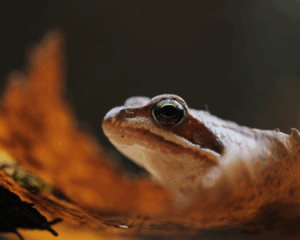What is pollination?
Pollination is how plants and flowers reproduce and obtain the ability to grow seeds, which involves the transfer of pollen (a grain-like substance that contains the “male” gametes) from one flower to another, usually facilitated by other sources, whether abiotic (wind, rain) or biotic (animal dispersal). Some plants are even able to self-pollinate, or even hybridise with another species to create new subspecies of offspring.
Pollination is essential for the reproduction and spread of plant species, and the animals that help facilitate the exchange of pollen are perhaps even more so.
Since it is finally spring, today we will be taking a closer look at the process of pollination, and how Alberta’s animal species help to distribute and benefit from these plant species.
Alberta’s pollinators
The honeybee (Apis mellifera) is probably the first animal that springs to mind when you think of pollination. But there are several bees found in Alberta, such as the bumblebee and leafcutter bee, that are responsible for spreading pollen from almost every single flowering plant (which they pick up while foraging for nectar).
However, bees are an endangered species, on the decline in many areas of the world, including Alberta, where winter records have shown a 40% decrease in colony populations in some areas (Edmonton Journal).
It isn’t just insects that help our native flowering plants, we also have a large variety of birds, such as the rufous hummingbird (Selaphorus rufus), which can be seen appearing in parts of the province around May if you are lucky enough to see one. Hummingbirds use their extremely long beaks to get at the nectar of flowers, and so are covered in pollen when they arrive at the next flower and pollination occurs.
Speaking of “hummingbirds”, Alberta is also home to one of the few moth species that do act as pollinators, the aptly named hummingbird clearwing moth (Hemaris thetis). This moth flies and feeds on flower nectar in the day time, and even mimics a hummingbird’s flight and hovering behaviours.
How does pollination help us?
Around 90% of flowering plants require some form of animal-mediated pollination to reproduce (Ollerton et al), and so the spread of pollen by animal species is essential for flowering plants, the majority of which constitute our crops and foods (fruits, vegetables and nuts). It is also important to remember that it’s not only humans that use these plant products, and that they fuel the herbivores of every ecosystem which in turn provide for the carnivores. Without pollinating plants, it is very possible for an ecosystem to destabilise.
What can we do?
Many people plant native Albertan species in gardens to encourage their spread by pollinators; beekeeping is also another way to help the declining bee populations as they are kept safe and secure and free to pollinate.
Using a good variety of different flowering species with different colours and shapes will attract a wider variety of species, as well as reducing the amount of chemical pesticide you use on your garden. Providing clean water and helping support land stewardship and conservation are great ways to ensure that our amazing pollinator species and the plants that rely on them will be around for years to come (NRCS).
By Jonathan Poll, AIWC Volunteer
Sources
https://naturecanada.ca/news/blog/the-hummingbird-moth-one-of-canadas-coolest-creatures/
https://www.greencalgary.org/blog/7-great-canadian-pollinators/
Ollerton J, Winfree R, Tarrant S: How many flowering plants are pollinated by animals? Oikos2011, 120(3):321-326.
https://www.nrcs.usda.gov/wps/portal/nrcs/main/national/plantsanimals/pollinate/gardeners/







5 thoughts on “Alberta’s Pollinators”
My sister and I would like to be evolved with a group of people in the Edmonton area that are involved with pollinators. Do you have suggestions on who we can contact for more information. Thank you Ginette
Hi Ginette,
I’m afraid we do not have any information for this area but we will definitely let you know if we come across any contacts. Thank you!
you can check facebook for the alberta native bee council
If you are in Edmonton, I recommend checking with the John Janzen Nature Centre. They offer courses on urban pollinators, including urban bee keeping.
That’s great to know, thank you for sharing!